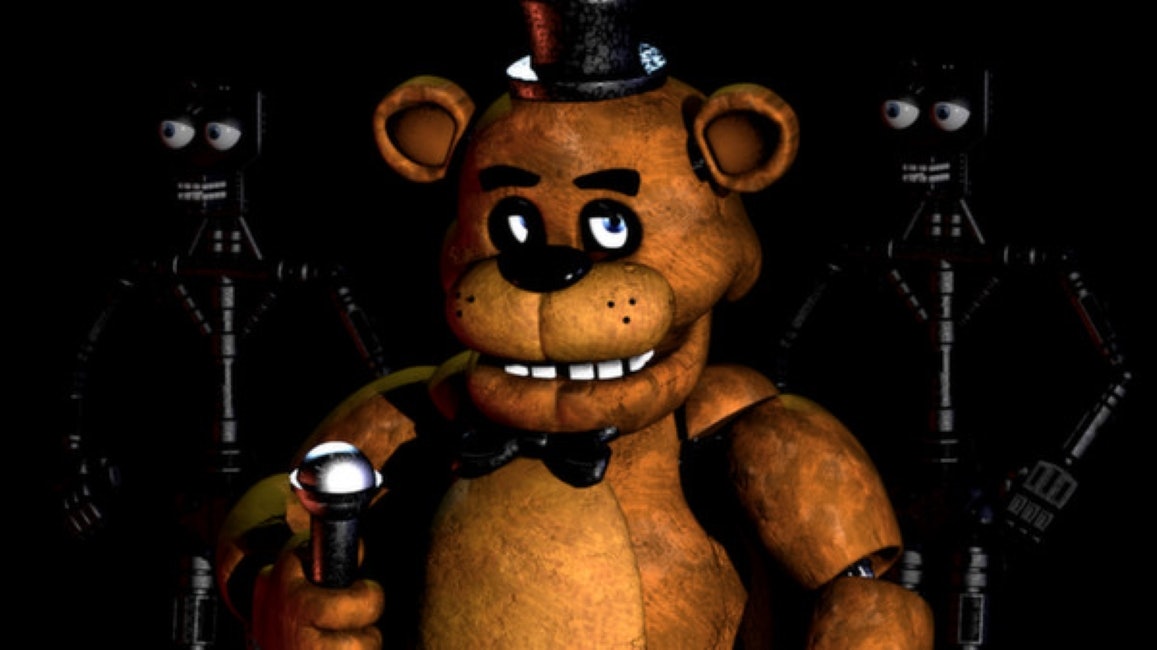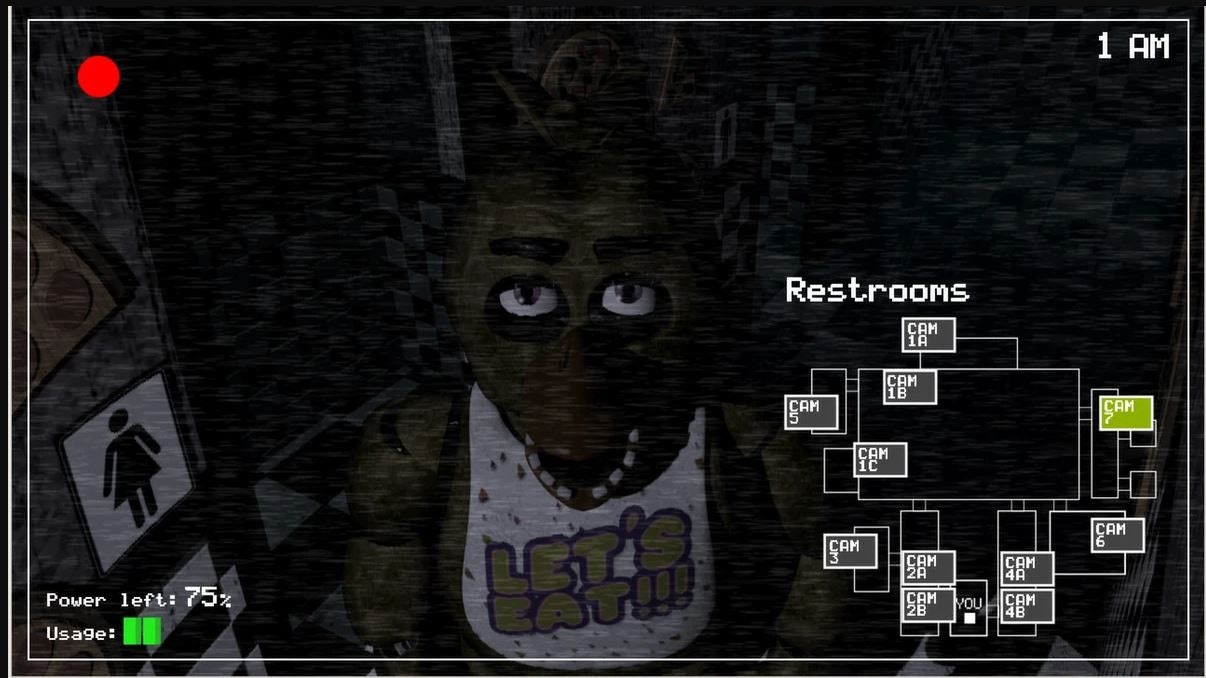
Symbiotes have a bad reputation. For those who first think of Venom, Spider-man’s archnemesis made famous by the inimitable Tom Hardy, its understandable that what symbiosis brings to mind is a damaging or dangerous relationships. In reality, most symbiotes exist specifically because they’re a good deal for everyone. The billions of bacteria in your gut breaking down that slice of pizza are a perfect example or maybe the Oxpecker bird pulling out and eating ticks from the hippo’s flesh is more your style. Symbiotic relationships aren’t confined to nature, however. Our media landscape is full of them, too. And 10 years ago an iconic video game franchise got off the ground because it latched onto a perfect host for finding an audience.
Five Nights at Freddy’s released on August 8, 2014 as a low-budget indie survival horror game from a one-man studio. Developer Scott Cawthon created a pitch-perfect horror premise. Players take on the role of a lone overnight security guard who must survive five nights at a haunted Chuck E. Cheese-style kids restaurant called Freddy Fazzbear’sPizza. Players are stuck in a single room monitoring cameras and different remote controlled doors. The evil robots won’t move if someone is looking at them, forcing players to go back and forth to different feeds to try to keep the robots at bay until the morning. What drives the gameplay are tons of jumpscares, a gimmick that proved essential to FNaF’s success thanks to an army of YouTubers who discovered the game — and made it a massive hit among their Gen Z audience.
The origin story of FNaF is as unlikely as the game’s success. Scott Cawthon is a devout Christian who spent his early years in game development trying to create family-friendly titles, with limited success. One such game, Chipper and Sons Lumber Company was widely panned by critics. The art style was the recipient of most of the hate, with some likening Cawthon’s cheerful creatures to creepy animatronics. Cawthon took this to heart and, after no doubt having some serious reflection on his values, he decided to lean into the look and soon Freddy Fazzbear was born.
Working as a one-man studio, Cawthon didn’t have access to tons of resources. He built the game engine using Clickteam Fusion, a relatively unknown suite of development tools, and humbled his ambitions. Locking players into a room with only a few switches to interact with meant the game had to be driven by atmosphere and story. As a result of these limitations Cawthon turned jumpscares from one of gaming’s oldest, and least popular, mechanics into a genre-defining feature that is still popular today. How did he pull of this feat? With a little help from the Let’s Play streaming boom.

Let's Players such as Markiplier, PewDiePie, and Jacksepticeye, created content featuring their reactions to the game's intense jump scares and eerie atmosphere. Markiplier, in particular, dubbed himself the "King of Five Nights at Freddy's" and amassed millions of views on his FNaF videos. His enthusiastic and often terrified reactions resonated with his Gen-Z audience. One of his earliest FNaF videos, WARNING: SCARIEST GAME IN YEARS, currently sits at 120M views.
The horror and mystery elements of FNaF were particularly well-suited to the Let's Play format. Anyone with younger siblings is familiar with being asked to handle games that were too hard or too scary, and the Let’s Play format lets audiences experience the game vicariously through their favorite personalities — a way into the game that also too a bit of the edge off the fear. The game's design, with its tension-building mechanics and unpredictable animatronic attacks, provided ample material for entertaining and suspenseful content.
A rabid fandom emerged, and the game's lore sparked extensive theorizing and speculation among fans and content creators. Channels like The Game Theorists, led by MatPat, produced in-depth analyses and theories about the game's story, characters, and hidden secrets. These videos not only kept existing fans engaged but also drew in new players intrigued by the narrative.

The relationship between FNaF and YouTubers created a feedback loop: YouTubers brought visibility and excitement to the game, which in turn drove more people to play and discuss it, generating ever more content. This exposure contributed significantly to the series' viral success and cultural impact, elevating it from a niche indie horror game to a mainstream phenomenon.
Cawthon quickly capitalized on the popularity. Because he was skilled at making simple games quickly, FNaF became a franchise seemingly overnight. Within a year he released Five Nights at Freddy’s 2 in November 2014, Five Nights at Freddy’s 3 in March 2015 and Five Nights at Freddy’s 4 in July 2015.
To date there are a total of 18 mainline and spin-off games, not to mention novels, a major motion picture, and warehouses of merch. Like any good symbiote, Cawthon’s FNaF franchise also helped dozens of streamers build massive followings and become full-time superstars. Not bad for a guy who couldn’t make a cute cartoon beaver.







